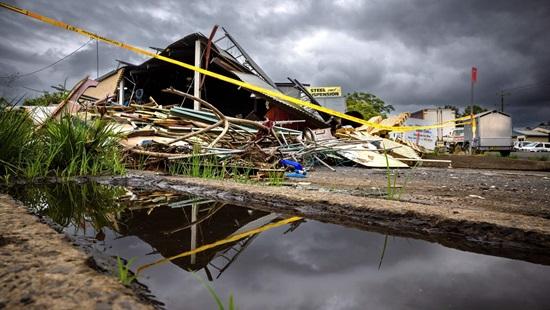Reply To:
Name - Reply Comment

Fast-rising home insurance premiums have plunged 1.6m households into affordability stress, an Actuaries Institute report has warned, with those in cyclone and flood-prone areas facing significant spikes in cost.
The figure is a 30% increase over the past year, and the institute has forecast it will only worsen as the frequency and intensity of natural disasters grows.
The report’s lead author, Sharanjit Paddam, is concerned that so many people are struggling to insure their homes.
“This is because increases in premiums are outpacing wages growth,” he said. “Unfortunately, we expect this will continue because of the overall increasing risk of natural disasters associated with climate change, which will continue to put upward pressure on premiums.”
Households facing insurance affordability stress pay more than $5,200 a year in premiums, more than double the average, according to the report.
The institute-commissioned report, authored by the actuarial and insurance consultants Finity, found there was a 9% rise in median insurance premiums over a 12-month period.
Those in areas of high flood and cyclone risk, which includes parts of southern Queensland and the New South Wales northern rivers region, saw premiums rise by almost one-third.
Climate change is weighing heavily on prices charged by reinsurers, which take on some of the risk of natural disasters and ultimately pass on costs to policyholders.
The institute has previously suggested state governments may need to invest in the quality of social housing and resilience to disasters by issuing “climate adaptation bonds” or other finance instruments.
The Greens senator Mehreen Faruqi said fossil fuel companies, not households, should be paying for the consequences of climate change.
“The first step to tackling skyrocketing insurance premiums is to stop fuelling the fire,” Faruqi said.
She said the solution was to “transition away from fossil fuels now and stop opening new coal and gas mines”.
Rising home and auto premiums have been notable contributors to high inflation and household costs due to increases not seen in more than two decades.
The assistant secretary of the Australian Council of Trade Unions, Joseph Mitchell, said large insurers were “making a killing off the back of sky-high premium increases”.
“The insurance companies are crying poor and blaming [it on] cost increases,” he said. “But they have increased premiums well above costs to post record profits, using the same price gouging formula as other major businesses coming out of the pandemic.”
General insurers have consistently denied they price gouge. They attribute rising premiums to the escalating costs of natural disasters, the growing cost of replacement and building costs, and the rising cost of capital.
Tom Pockett, the chair of Insurance Australia Group, the largest general insurance company in Australia and New Zealand, said last week it had set up customer support processes to help those in financial hardship.
“Inflation also affected our claims and supply chain and, combined with higher reinsurance costs, resulted in premium increases that were necessary to ensure we could continue to be there for customers when they need us most,” he said.
Insurers have not faced the same sort of political scrutiny as supermarkets and banks, which also expanded profit margins during the inflationary period. (The Guardian)
